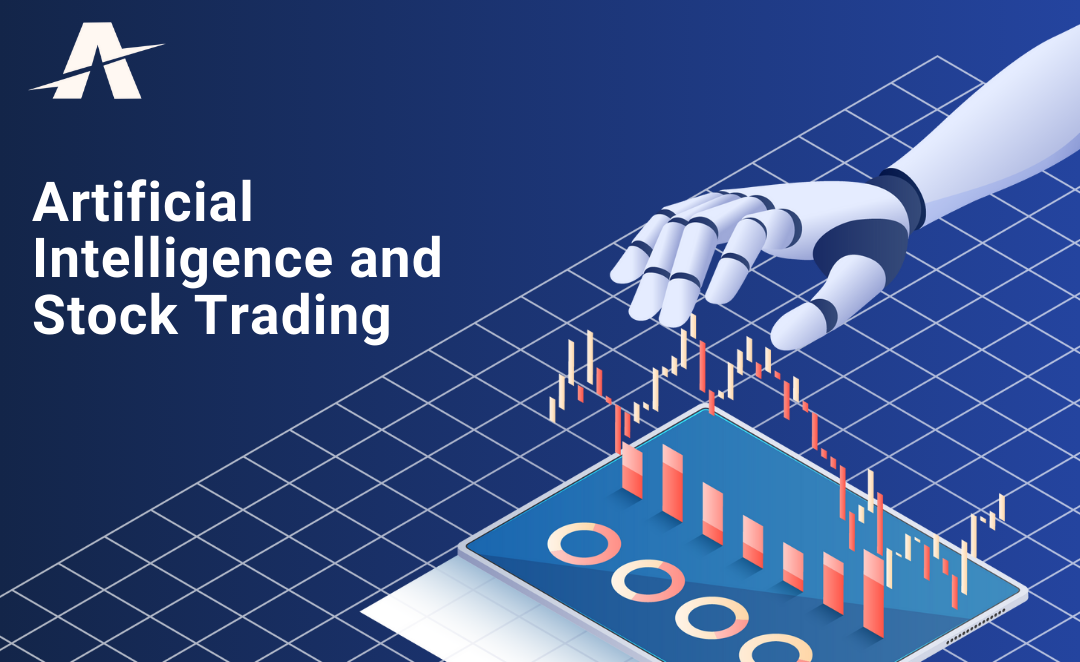20 Recommended Reasons For Picking Ai Stock Predictions
Wiki Article
Top 10 Tips To Automate Trading And Regularly Monitoring Trades In Stocks, Ranging From Penny Stocks To copyright
Regular monitoring and automation of AI trading in stocks is essential for optimizing AI trading, especially in volatile markets like penny stocks and copyright. Here are 10 top suggestions to automate and monitor trading to ensure that it is performing.
1. Start with Clear Trading Goals
Tip: Determine your trading goals, which include your risk tolerance, the expected return and your preferred asset.
What's the reason? Clear objectives guide the selection of AI algorithms as well as risk management regulations and trading strategies.
2. Trustworthy AI Trading Platforms
Tip: Choose AI-powered trading platforms which offer complete automation and the integration of your brokerage company or copyright exchange. Examples include:
For Penny Stocks: MetaTrader, QuantConnect, Alpaca.
For copyright: 3Commas, Cryptohopper, TradeSanta.
The reason: A robust platform that has strong execution capabilities is essential to automated success.
3. Customizable trading algorithm is the main goal
Tips: Choose platforms that allow you to design or create trading algorithms that are tailored to your particular strategy (e.g. trend-following, trend-following, mean reversion, etc.).).
Reason: Customized algorithms guarantee that your strategy matches with your particular style of trading regardless of whether you're focusing on penny stocks or copyright.
4. Automate Risk Management
Tips: Make use of the automated tools for risk management such as stop-loss order, trailing stops and take-profit levels.
Why: These safeguards help protect your investment portfolio from huge losses, particularly in volatile markets such as penny stocks and copyright.
5. Backtest Strategies Before Automation
Tips: Test the automated algorithm to test their the performance prior to launching.
Why: Backtesting is a method of ensuring that the strategy works in real market conditions, and reduces the risk of a poor performance.
6. Check the performance of your system and make any adjustments necessary
Tips: Keep track of performance even when the trading process is automated.
What to Monitor What to Track: Profit and loss slippage, profit and loss, and whether the algorithm is aligning with the market's conditions.
Why? Continuous monitoring ensures that timely adjustments are taken if market conditions change, and that the strategy is effective.
7. The ability to adapt Algorithms to Apply
Tips: Choose AI tools that alter trading parameters in accordance with real-time data. This allows you to adapt your AI tool to the changing market conditions.
The reason: Since markets are constantly changing adaptable algorithms can be used to improve strategies for penny stocks or cryptos to keep up with the latest patterns and volatility.
8. Avoid Over-Optimization (Overfitting)
A warning Be careful not to over-optimize your automated system based on past data. Overfitting could occur (the system performs extremely well during tests but fails in real-world conditions).
Why? Overfitting decreases the ability of your strategy to adapt to new conditions.
9. AI is an effective tool for detecting market anomalies
Tip: Utilize AI to spot odd patterns or anomalies on the market (e.g., spikes in trading volumes and changes in news sentiment, or copyright-whale activities).
Why? Early recognition of these signals will allow you to make adjustments in your automated trading strategies before significant market movements take place.
10. Integrate AI into regular notifications and alerts
Tips : Set up real time alerts for market trading events that have significance, as well as fluctuations in the performance of algorithms.
Why: You can be informed about critical market movement and take quick action if required (especially for volatile markets, such as copyright).
Bonus Cloud-based Solutions are Scalable
Tip: Cloud-based trading platforms offer more scalability, speedier execution and capability to run multiple strategy simultaneously.
Cloud solutions allow the trading system to operate 24/7 seven days a week, uninterrupted. This is essential for copyright-markets that never shut down.
You can profit from AI-powered trading by automating your strategies and monitoring them regularly. This reduces risk and enhance overall performance. Check out the best stocks ai blog for website recommendations including stocks ai, best ai stocks, free ai trading bot, trading with ai, ai day trading, best ai trading bot, copyright ai bot, ai stock analysis, ai for trading, ai trading app and more.

Top 10 Tips For Updating And Optimising Ai Stock Pickers Predictions, Investment Models And Predictions
The regular updating and optimization of AI models for stock selection, predictions, and investments is essential to maintain the accuracy of your models, being able to adapt to market changes and improving overall performance. Your AI models should evolve with changes in the market. Here are ten tips to help you optimize and keep up-to-date your AI models.
1. Continuously Integrate Market Data
Tip. Always incorporate market data such as the most recent stock prices and earnings reports. Also, take into consideration macroeconomic indicators.
AI models become outdated without new data. Regular updates keep your model up-to-date with market patterns and improve accuracy in prediction.
2. Monitor Model Performance In Real Time
A tip: Monitor your AI model in real-time to identify any indications of underperformance or drift.
Why is that monitoring performance gives you the chance to spot issues like model drift. When the model's accuracy diminishes over time, this gives you the chance to adjust and intervene.
3. Train the models on periodic basis, using up-to-date data
Tip Retrain your AI models regularly (e.g. monthly, quarterly, or monthly) by using the most recent historical data to improve the model and allow it to adapt to the changing dynamics of markets.
What's the reason: Market conditions change over time, and models built on outdated information will lose their validity. Retraining models allows them to adapt and learn from new market behaviors.
4. Adjusting hyperparameters can help improve accuracy
TIP Improve the parameters (e.g. the learning rate, layer of numbers, etc.). Optimize your AI models by employing grid search, randomly generated search, or any other optimization method.
Why? Proper tuning of the hyperparameters can help in improving prediction and preventing underfitting or overfitting with the historical data.
5. Try out new features and variations
Tip : Constantly experiment with different data sources and features to improve your model and uncover new correlations.
What's the reason? The addition of new relevant elements can increase the accuracy of models because it allows the model access insights.
6. Use ensemble methods for better predictions
Tip : Combine multiple AI models by using group learning techniques such as stacking, bagging or boosting.
Why: Ensemble models increase the reliability of your AI models. Through leveraging the strengths and weaknesses of different models, they decrease the likelihood of making incorrect predictions due to weaknesses of any one model.
7. Implement Continuous Feedback Loops
Tip: Create feedback loops where models' forecasts and the actual market outcomes are examined and used to improve the model continuously.
What is the reason? A feedback loop ensures that the model is able to learn from the real-world experience, allowing to spot any flaws or biases that need correction and refining the future forecasts.
8. Regular Stress Tests and Scenario Analysis
Tip: Stress-test AI models periodically by using scenarios of market conditions, such as crashes, or extreme volatility. This will allow you to test their resiliency and capability to cope with unexpected situations.
Stress testing can help ensure that AI models are prepared for market conditions that are unusual. Stress testing helps to identify flaws in the AI model which could make it perform badly under extremely or volatile market conditions.
9. AI and Machine Learning - Keep up to date with the most recent developments
Be informed of the most recent AI advances in AI. Also, experiment with adding new methods to your models, like transformers and reinforcement-learning.
Why: AI is rapidly changing and the most recent advancements can improve performance of models, efficacy and accuracy in forecasting and picking stocks.
10. Continuously assess Risk Management and adjust as needed
Tip: Regularly assess and modify the risk management elements of your AI model (e.g., stop-loss strategies or position sizing, return adjustments for risk).
Why? Risk management is critical when it comes to trading stocks. The AI model should be regularly evaluated to ensure that it not only maximizes returns but also manages market risk.
Keep track of the market and integrate it into your model updates
Integrate sentiment analyses (from news social networks, news, etc.). The model you have created can be updated to reflect changes in investor psychology, market sentiment and other factors.
The reason: Market sentiment can have a major influence on the price of stocks. The inclusion of sentiment analysis within your model allows you to observe broader emotional and market mood changes that might not have been a part of traditional data.
The conclusion of the article is:
By regularly updating and optimizing your AI stock picker, predictions and investment strategies, you ensure that the model is always able to adapt accurate, reliable, and competitive in a constantly changing market. AI models, which constantly retrained using fresh data and refined, while also using the latest AI advances and real-world data can give you a significant advantage in forecasting stock prices and investment decisions. Check out the best ai for copyright trading for more examples including ai for investing, trading ai, copyright ai bot, ai trading platform, ai investment platform, copyright ai trading, best ai copyright, ai financial advisor, ai financial advisor, ai copyright trading and more.
